Categories
- Argentina
- Chile
- Antarctica
- Easter Island
- Falklands (Malvinas)
- Bolivia
- Peru
- Uruguay
- Paraguay
- Brazil
- Venezuela
- Colombia
- Ecuador
- Galapagos
- Panama
- Costa Rica
- Cuba
- Nicaragua
- Honduras
- El Salvador
- Guatemala
- Belize
- Mexico
- Latin American Xmas
Pages
- Street Art of Buenos Aires
- A week in Buenos Aires
- The Jesuit Missions in South America
- Contact Us
- Map of Central America
- First week in Latin America – October 2009
- Home Page
- Map of South America
Archives
- October 2011 (3)
- September 2011 (9)
- August 2011 (10)
- July 2011 (7)
- June 2011 (6)
- May 2011 (11)
- April 2011 (10)
- March 2011 (4)
- February 2011 (5)
- January 2011 (6)
- December 2010 (6)
- November 2010 (4)
- October 2010 (8)
- September 2010 (5)
- August 2010 (7)
- July 2010 (5)
- June 2010 (6)
- May 2010 (6)
- April 2010 (7)
- March 2010 (6)
- February 2010 (9)
- January 2010 (4)
- December 2009 (8)
- November 2009 (5)
- October 2009 (2)
Lake Nicaragua
28th April 2011
What were we thinking, crossing from Costa Rica to Nicaragua at Easter? The line of trucks was 20 kilometres and 4 days long. We joined the hoards of people at the border and eventually made it to San Jorge [1], near Rivas on Lake Nicaragua. Holiday celebrations were in full swing on the beach.
.
The next day we joined more hoards of happy local holiday makers on the one hour ferry across the lake to Ometepe Island, rising out of the lake with its two perfectly formed volcanic peaks over 1600 meters high joined by an isthmus of lava. Once on the island the crowds soon dispersed and Moyogalpa, the capital, went back to being a pueblo tranquilo – a sleepy little village. Ancient civilizations, believed to have come from Mexico and Central America, held the island sacred and left behind stone statues and petroglyphs depicting birds, animals, humans as well as geometric shapes. Shards of pottery from pots thrown into the lake by indigenous people as the Spanish approached can still be found washed up on the black sand beaches.
.
The delightful colonial city of Granada [2] sits on the western edge of the lake. Nicaragua´s oldest city was founded in 1524, almost completely destroyed in 1856 by fire but later restored to the gem it is today. The heat kept us indoors during the day but in the evenings it was pleasant strolling and sampling freshly made tortillas, roast corn and grilled meat sold by vendors along the cobbled streets.
.
Rock from an eruption of the nearby Mombacho Volcano thousands of years ago, formed some 350 islets near the city. We spent a pleasant morning on a boat ride between the islets inhabited by traditional fishing families and Nicaragua’s´ rich and famous. One islet is home to some spider monkeys that jumped onto our boat.
.
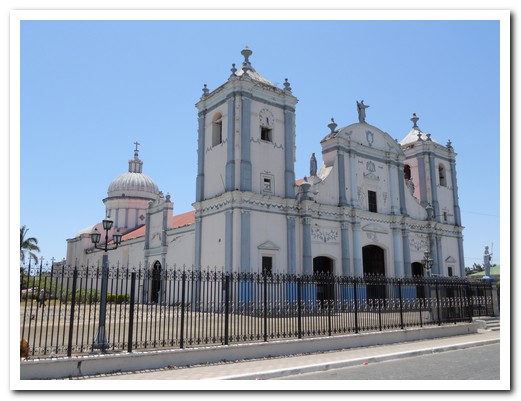
Rivas Cathedral
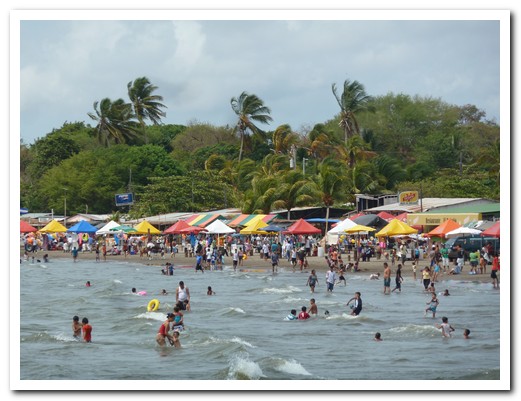
Locals celebrate Easter on Lake Nicaragua

Twin volcanoes of Isla Ometepe

Moyogalpa Church on the island

Easter procession

Volcán Concepción towers over Moyogalpa

Volcán Maderas

Last ferry of the day

Shady road to a beach

Bright blue Urraca

Orchid

Orchid

Pre-Colombian stone statue

Pre-Colombian stone statue

Petroglyph over 2000 years old depicting a calendar
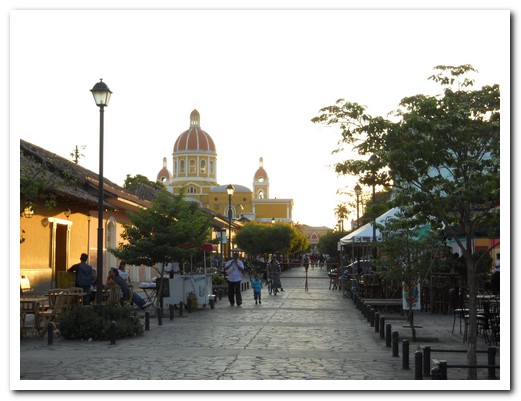
Evening in Granada

Iglesia Guadalupe

Iglesia La Merced

Meat grilling on the side walk makes a tasty $2 meal
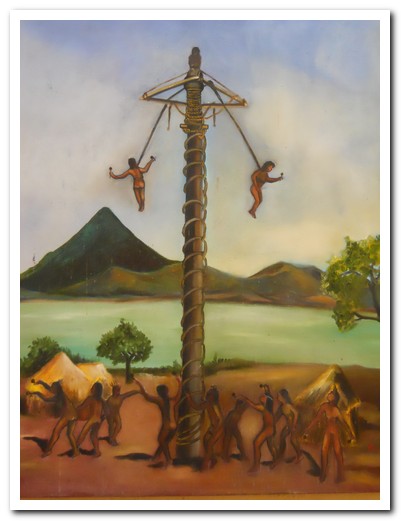
Painting of pre-Hispanic pole dance

Early pot

Mombacho Volcano near Granada

One of the 350 islets formed by the explosion of Mombacho

A spider monkey joins us on the boat

Tiger heron

Pretty water birds around the islets

White heron

Cashew nuts on the tree
North Central Costa Rica
19th April 2011
There was little to keep us in San José [4], the capital of Costa Rica. After a visit to the rim of nearby steaming Volcán Poás surrounded by coffee plantations, we headed to La Fortuna [5], in the central north. The main attraction here is the perfect cone shaped, active Volcán Arenal.
.
In the lush, tropical garden setting of Arenal Natura Ecological Park we were able to observe rare and endangered frog in large, plant filled terrariums. The enthusiastic, knowledgeable staff took time to point out the well camouflaged frogs and explain the different breeding habits. There are about 30 different species, some you could never see in the wild.
.
To reach Monteverde (green mountain) [6], we took a boat across Laguna de Arenal followed by a bus over rolling green hills of pasture land and forest. Together with the little village of Santa Elena, Monteverde offers it all, swinging through the trees, cloud forest trails, frogs, birds, butterflies, orchids, hummingbirds, and lots of tourists. Next stop Nicaragua via Peñas Blancas [7].
.
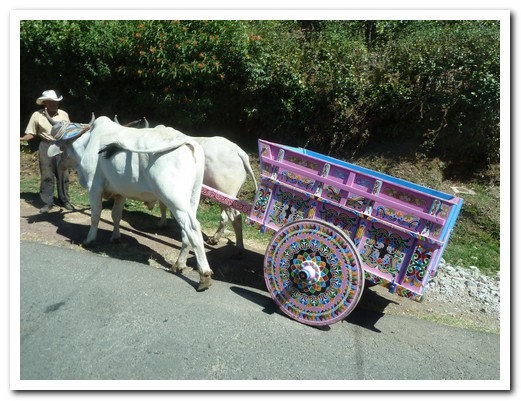
Traditional painted coffee wagon
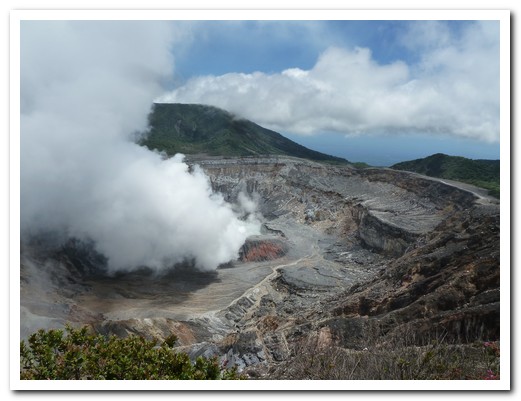
Smoking Volcán Poás

Endemic flower in the acidic atmosphere of the volcano

Huge Ceiba tree, about 100 years old, in the Arenal National Park

Oro Pendula bird
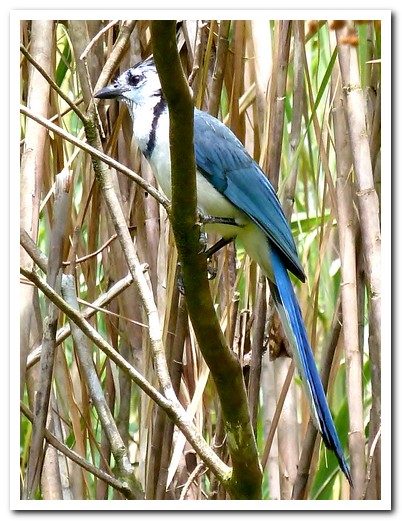
Many of these blue Urraca birds around La Fortuna

Volcán Arenal

Orange orchids on the volcano

Ginger flower

Red eyed tree frog
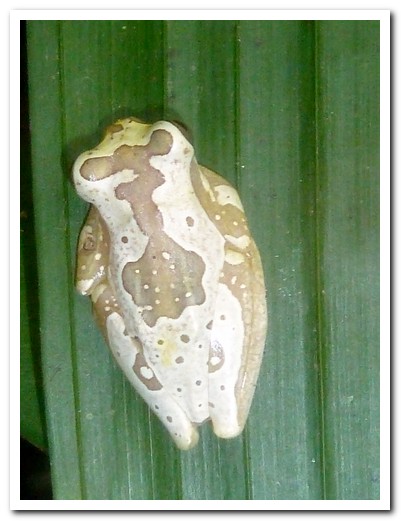
Hour glass frog

See-through glass frog

Tiny poison frog

The only frog with a spur for fighting
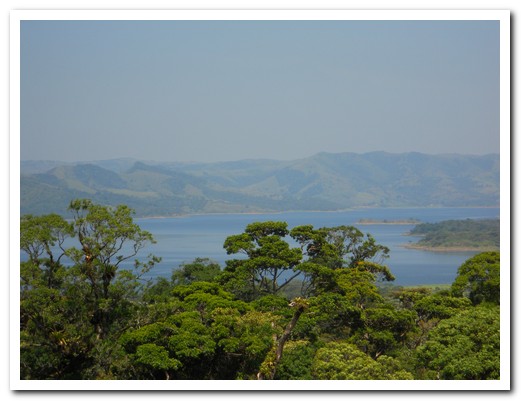
Laguna de Arenal

Monteverde Cloud Forest

Butterfly

Hummingbird

Hummingbird
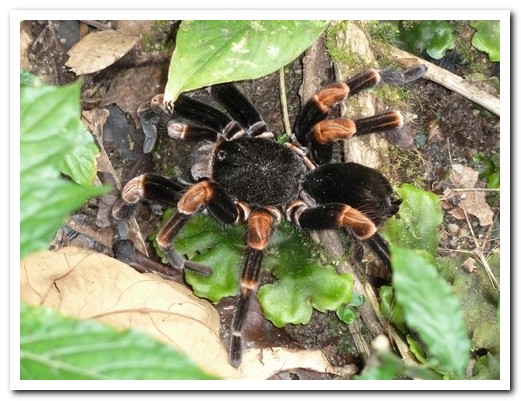
Tarantula
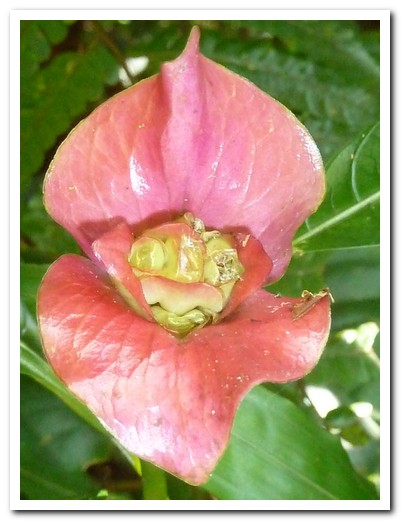
Flower of the cloud forest

Another forest flower

Bright coloured parrot
La Habana
13th April 2011
The first thing we noticed on arrival in La Habana [1], Cuba, was the helpful happy people, no traffic congestion and the number of shiny 1950´s American cars. The longer we were there, the more back to the fifties it felt; back when consumerism wasn´t all pervading, when children played in the streets, when you could walk around safely. Black fishnet stockings are still kicking on in Cuba too.
.
There are two currencies in Cuba, Convertible Pesos (CuC) – essentially US$, and Cuban Pesos (Moneda Nacional, MN) at 24 to the CuC. Cubans are paid in MN. Pretty much anything a tourist would want is priced in CuCs, but MN can get you some real bargains – ice cream 4c, individual pizza 30c, not bad either. How about a novel for 70c or a bunch of red roses under $1?
.
The architecture of Habana Vieja is a fantastic jumble of art deco, colonial, baroque, gothic, neo classical, Gaudi-esque and Soviet era concrete apartment blocks. Some buildings have been painstakingly restored while others crumble slowly away. The Malecón, stretching 8 kilometres around Habana Bay is a good place for sun set watching. We stayed in the 400 year old Convento de Santa Clara and enjoyed an evening mojito or two in one of the open air plazas. Habana – file it under World´s Greatest Cities.
.

Habana´s Cathedral, construction started by the Jesuits in 1748

Inside the Convento Santa Clara, where we stayed

The restored Plaza Vieja, laid out 1559

Flower seller
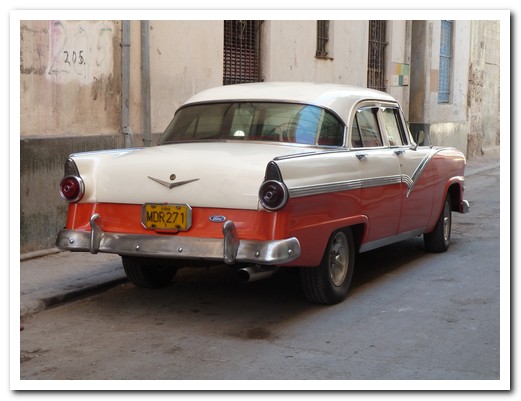
An old Ford

Restored building in old Habana

Bici-taxi waiting beside a crumbling old Habana building

Light house and fort at the entrance to Habana Bay

Resting in the shade

Old taxi

Better than new

Plaza de San Francisco de Asís (from 1608)

Castillo de la Real Fuerza, the oldest fort in the Americas, built 1558 - 1577

Caricature of Jeff, done for free while waiting for a bus

Mailbox
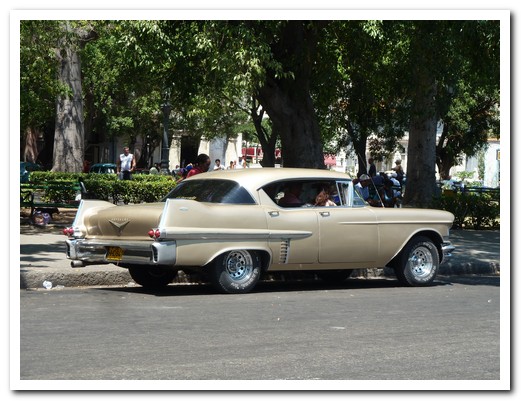
Caddy El Dorado

Colonial architecture on Plaza Vieja

Narrow street in old Habana
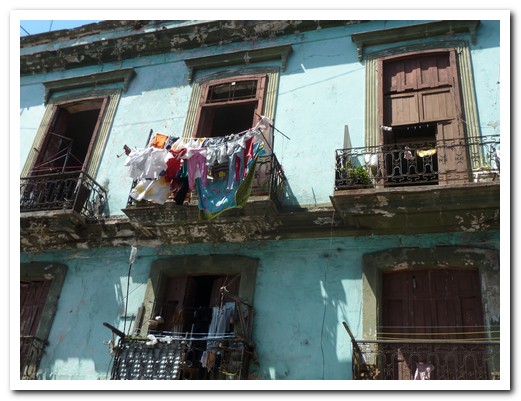
Washing drying in the sun

Che on a building at Plaza de la Revolución

Fishnet stockings are all the rage

Taxis

Sunday afternoon on the Malecón

Cigar smoking character

Balcony

In the old city

The old Galicia (northern Spain) Club

Hotel Inglaterra - the oldest hotel in Habana (opened 1856)

What´s your poison? (Prices in US$ per bottle)

The Convent of Santa Clara (1632) our home in Habana

Sunday afternoon baseball - ball made of paper and tape

Restoration work needed

Arab influence

Gothic church

Hotel Sevilla - built 1908 in the mudéjar style

Bacardi building (1929)

Gaudi-esque

Art deco
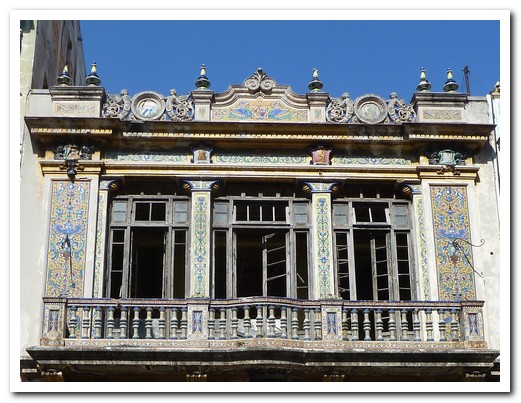
Beautiful tile work on a dilapidated building in central Habana

Two cigar smoking ladies

Russian Orthodox Church

Iglesia and women´s hospital San Francisco de Paula (1750s)
Santiago de Cuba
13th April 2011
We left Habana by bus on the National Highway, all 8 lanes almost deserted. Another surprise – locals put their baggage overhead on the bus, we have never seen that in South or Central America; it would be stolen. After an all night trip we arrived in Cuba´s second largest and most Caribbean city, Santiago de Cuba [2]. Music, dominated by the drum beat of Africa, was everywhere with groups performing day and night in parks and bars for a few coins. We enjoyed a folkloric performance of traditional Afro-Cuban music and dance, a strange mix of Catholicism complete with Virgin, and voodooism.
.
The best accommodation is in Casas Particulares (rooms in a private home), a good way to meet local people and to stay in some real colonial classics. They are good value at $20 to $30 per night. Glad not to be on an organised tour, we entered the “system” – each owner knows someone with a Casa in every town and sets up the next one for you. You are picked up at the bus station too thus avoiding the legion of jineteros (hustlers) waiting for the buses. We started at Casa Nenita in Santiago, built in 1850.
.
Cuban coffee is drunk strong and sweet. They have been growing coffee since the early 1800´s, introduced by the French escaping from revolting slaves in Haiti. On one of the old plantations, Cafatel la Isabelica, the mansion and coffee drying platforms are World Heritage. We hired a taxi to take us there. But … that day there was no petrol so we couldn´t go.
.
At the entrance to the Santiago bay, a large Spanish fort, Castillo de San Pedro de la Roca del Morro, sits high on the cliff. Below is the picturesque island of Cayo Granma where traditional fishermen live in wooden houses with rusty tin roofs. We took the local ferry over and lunched on the catch of the day.
.

Rebellious yesterday, hospitable today - forever heroic
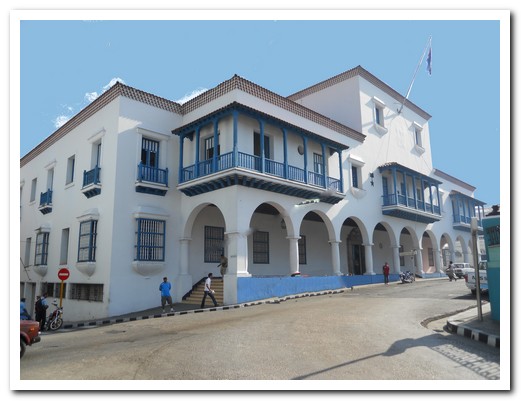
City hall, Santiago de Cuba, where Castro made his victory speech from the balcony in 1959

An old church

Some of the old cars ...

... in the streets of Santiago

Lovely bathroom, original not retro, in our Casa Nenita

Musicians in a park
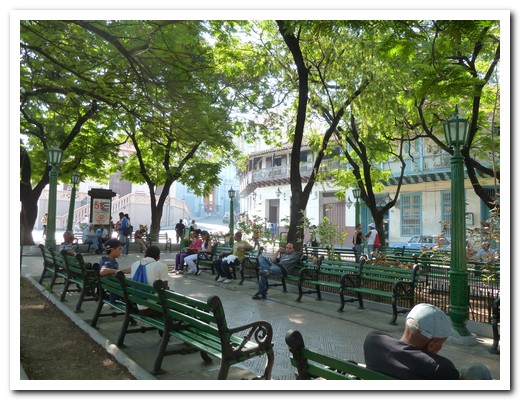
Shady park

Jeff lining up for his 30c pizza

One way of getting around town

Folkloric group

Afro-Cuban dance




Trumpet player

Castillo de San Pedro de la Roca del Morro

Cayo Granma fisherman
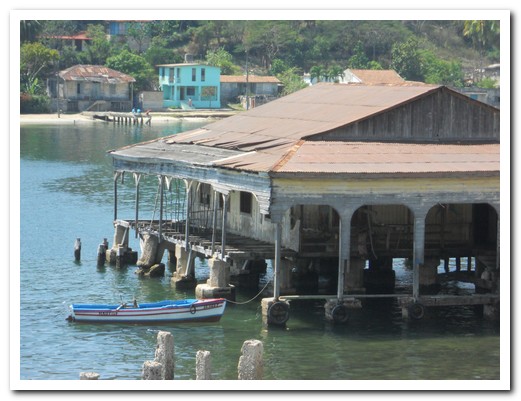
Old house out over the water on Cayo Granma

Fifties American cars on the main plaza

The bar in Hotel Casa Granda, unchanged since Graham Greene´s Our Man in Habana
Baracoa
13th April 2011
Baracoa [3], Cuba´s oldest town, was settled in 1511 but remained isolated from the rest of the country for 450 years until a road was constructed. Near the church is the wooden cross Columbus erected in 1492. We arrived just in time for the 500 year celebrations; a really good excuse to party. The heat brought everyone out in the evenings and the sound of music drew us to a live band in the street outside a small bar. Dance and music is in the soul of Cubans – the singing bus driver, the dancing waiter, the little old lady on her walker swaying to the beat, even the tiny children have the moves. Another mojito and we would have been dancing!
.
Enroute the bus stopped at Guantanamo, not far from the famous (some would say infamous) US Naval Base of Guantanamo Bay. A Guantanamera is a woman from Guantanamo and that legendary song tells of a woman that the writer loved.
.
Typically seafood is cooked in a delicious coconut sauce. We had the most mouth-watering meal of Caribbean style prawns at our Casa Isabel Castro. As well as excellent chocolate, Baracoa produces a super sweet treat called Cucuruchu consisting of coconut, honey, guava, mango and a few other ingredients served in a cone of palm leaves.
.

Baracoa Bay

Baracoa Church built in 1833 over the original from the 16th century

Cross erected by Columbus in 1492

Typical colonial houses of Baracoa

Casa Isabel Castro where we stayed
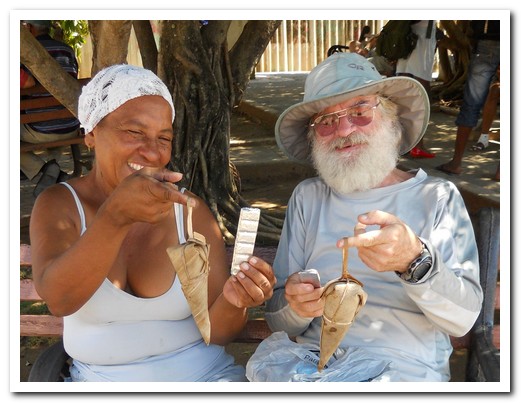
Lady selling cucuruchu and Baracoa chocolate

Music in the street outside a bar

Antique furniture and tiled floors of a Paladar (private restaurant)

Table top mountain El Yunque sit above Baracoa

From the malecón

Coastline

Endemic lizard

Yumurí River near Baracoa

Children in a row boat

Little girl playing on a beach
Camagüey
13th April 2011
Camagüey [4] has World Heritage status for its peculiar maze of twisting, narrow streets designed to fool pirates in days of old, now confusing today´s tourists. In stark contrast to the typical Spanish Colonial grid layout, in Camagüey no “square” is square, or even rectangular. Established in 1514, the colonial city is Cuba´s third largest and known as the city of tinajones (clay pots) for the large earthenware pots once used to store water. It is a city of many churches with its very own saint.
.
Carolina and Reyes warmly welcomed us into their Casa, filled with plants and knick knacks. Staying in a Casa is like visiting a distant aunt; everyone is a little reserved at first, but soon you are all chatting and laughing and you stagger off to bed full of delicious home cooked food, here typically Cuban – salad, black beans, rice and chicken. Cubans don’t drink much wine but we did see a bottle of Australian Jacobs Creek Chardonnay 2001 (yes 2001, not 2010) for $15 in a government store.
.
The Cuban newspaper was full of the visit to La Habana by the former US President Jimmy Carter and his meeting with former Cuban President Fidel Castro. We hope this will be the first step in a better relationship between the two governments.
.

A city square in Camagüey

One of Camagüey´s many colonial churches

Colourful restored street

Large plaza – the squares are not square

Iglesia de Carmen

Large pots were used to store water in colonial times

Restored building now an artist´s studio

Bici-taxi

Motorbike and sidecar still in use

Mobile veggie stores

Typical Camagüey house with wrought iron window grill
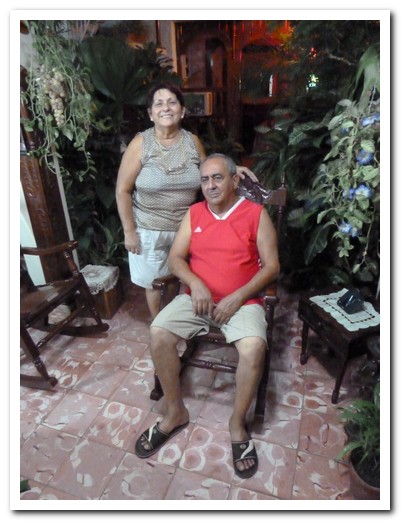
Carolina and Reyes in their Casa Particular
Santa Clara
13th April 2011
Santa Clara [5] is where Che Guevara led the attack which derailed a government train carrying soldiers and weapons in the last days of 1958, thus securing the Revolución. His remains lie in a mausoleum nearby. We have now completed the Che trilogy, from his childhood home in Argentina to the place where he died in Bolivia to his final grave in Cuba.
.
We have been travelling on the modern comfortable and punctual Viazul buses, a good way to see rural Cuba. For some reason only two places can be reserved from on the bus from Camagüey to Santa Clara and they were taken. We got to the station early to be first for a seat. There are invisible queues for many things in Cuba. When you arrive you find out who is the last person in line (¿Quien es el ultimo?), then you go wait somewhere comfortable. Someone will soon let you know if you try to go out of turn!
.
Hitch hiking is organised in Cuba. There are places to wait on the outskirts of each town (punto de transporte alternativo). Here men in yellow overalls organise the queues and stop vehicles (government cars have to give rides apparently). It might be a long wait though; we saw frustrated looking people waving fistfuls of pesos as cars sped by.
.

Santa Clara´s main square

Some of the buildings facing the square

Mausoleum and Museum for El Che
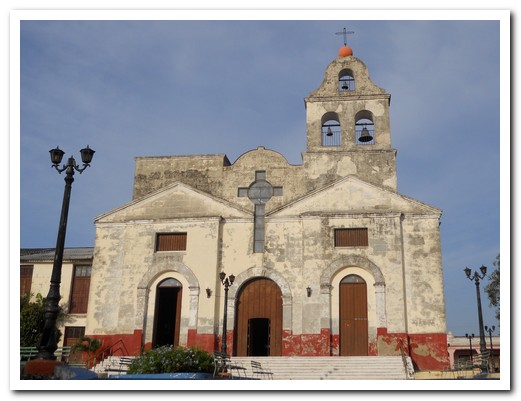
Church in Santa Clara

More horse drawn carriages than cars ...

... they even have their own traffic signs

Kids playing baseball, the national sport of Cuba

Santa Clara´s railway station

Saturday afternoon in the square

Ex social club, now a school

Reading the newspaper

Blanca outside her Casa in Santa Clara

Official hitch hiker stands along the highway
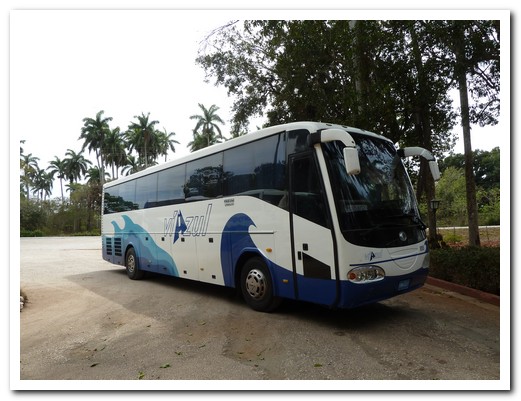
Viazul bus

Cuban Royal Palms dot the countryside
Trinidad
13th April 2011
Spanish colonial architecture is well preserved in the 19th century sugar boom town of Trinidad [6], on Cuba´s south coast. It is the most beautiful town in Cuba with its cobbled streets and colourful houses, frozen in the 1850s. Guayabera shirts originated here. These were loose cotton work shirts so called because the men used to come home with their 4 pockets stuffed with guavas, but have now replaced military fatigues as official national dress.
.
After a delicious criollo fish dinner at the museum-like Paladar Sol y Son we were entertained by the lovely harmonies of the Trinisur Quartet. Our 61 year old waiter joined in whenever he walked past them. He went outside and bought in a young woman (who was just walking by) for a dance too. Next evening we found a jazz band playing outside the church.
.
Although not much sugar is grown in the Valle de Los Ingenios (sugar mill valley) these days, it has World Heritage status for its ruined mills and estates. From a 50 meter tall watch tower at Manaca Iznaga, the master was able to keep an eye on the slaves in the sugar fields. Today there is fine view down the valley from the top.
.

Iglesia de la Santisima Trinidad

Old Franciscan Convent

Roof tops of Trinidad

Decaying Santa Anna Church, on the waiting list for restoration

Cobbled street

Car converted to ute

Man thinking

Trinidad street

Waiting room at Restaurant Sol y Son

Waiter joins in with the Trinisur Quartet

Man with his singing bird

Band plays outside the church in the evenings

Guayabera shirt, with 4 pockets

Resting on the church steps

Man with his friend the rooster

Curved street

House with balcony

Old mansion, now a museum

Remains of the first church

We stayed in the 200 year old Casa Particular Julian y Isabel

Only in Trinidad can you find so many shops selling crafts to tourists

Valle de los Ingenios (Sugar Mills)
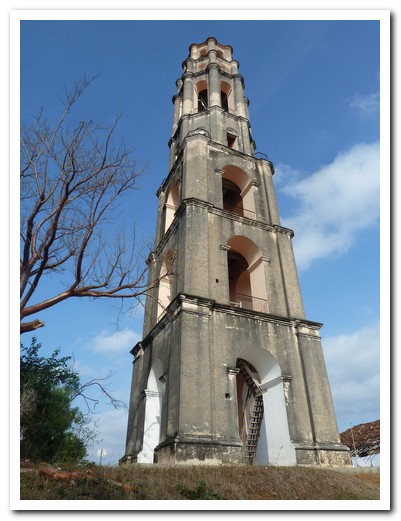
Watch tower to keep an eye on the slaves

Residence of the sugar estate Manaca Iznaga
Cienfuegos
13th April 2011
Cienfuegos [7], known as the Pearl of the South, was originally founded by French colonials from Bordeaux and Louisiana in 1819, and sits on a large bay. At the mouth of the bay is the Castillo de Nuestra Señora de Los Angles de Jagua, a Spanish fort in remarkably well preserved condition that predates the town by 100 years. We reached it by a small ferry boat after a 30 minute taxi ride.
.
Walking from the historic centre of Cienfuegos along the Malecón towards Punta Gorda, we came to the Cienfuegos Club, an elegant 100 year old turreted building which was formerly a rich man´s Yacht Club. Restored to better than new condition, it has a beautiful terrace and a good restaurant overlooking the bay. We stopped in for a mojito and dinner of garlic prawns. Surprisingly, only a handful of people were there to enjoy the sunset. Further along is the Palacio de Valle, looking like an Arabian Nights castle, plus other pre-revolutionary mansions and palaces.
.

Cienfuegos railway station

Old Jesuit College being restored

Cienfuegos Cathedral

Lattice work on an old house

Customs House
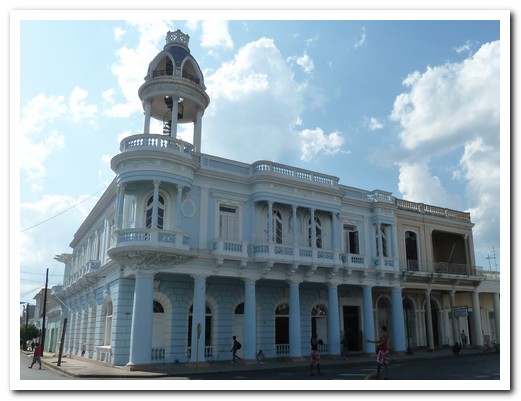
Blue Casa de Cultura

In a loud voice SOCIALISM - written on a city wall

Our room in Norma´s Casa

The Malecón

Cuba Radio in an old mansion

Club Cienfuegos

Palacio de Valle

Palacio Azul

Castillo de Jagua at the mouth of the Bay

Castillo
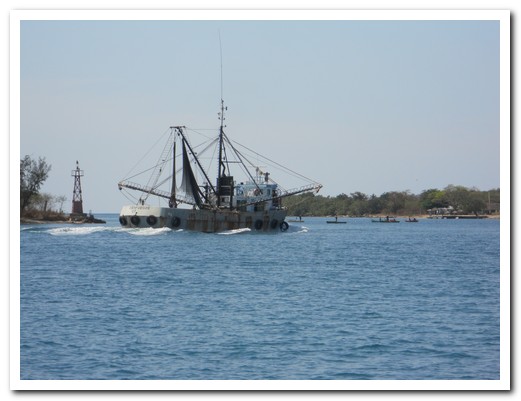
Prawn trawler heading out to sea

Fishing boat lie at anchor near the fort